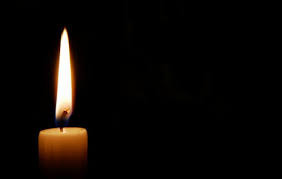
Zesa Holdings has warned Zimbabweans of crippling power cuts for the next 30 days owing to technical faults at the Hwange Power Station and a scheduled maintenance on one the units.
The development has seen Energy and Power Development minister, Edgar Moyo, pleading with independent power producers (IPPs) to intervene to prevent the country from being plunged into total darkness.
Zimbabweans are already battling prolonged load-shedding lasting up to 12 hours per day.
Zesa says it is experiencing depressed generation at the coal-fired Hwange power station owing to technical faults.
“This occurrence has resulted in increased load-shedding. Furthermore, we wish to notify stakeholders that the Hwange Unit 7, which was synchronised in March 2023, is scheduled to undergo Class C maintenance, a statutory procedure that requires the Unit to be taken off the grid after running for a defined period. This work is expected to be completed within 30 days,” the power utility said.
On Tuesday, the Zimbabwe Energy Regulatory Authority (Zera) announced new tariff adjustments to help the power utility address outstanding maintenance of the transmission and distribution network that was resulting in numerous faults.
The recent tariff award adjustment translated to a weighted average of 13.28USc/kWh for all customers.
Addressing officials at the energy ministry’s five-day annual strategic plan performance review workshop in Mutare yesterday, Moyo said the power utility needed to focus on reducing losses during transmission.
- $10m allocated for hospital rehabilitation
- $10m allocated for hospital rehabilitation
- Low tariffs weigh down ZETDC
- Zesa doubles power charges
Keep Reading
He said the contribution by the IPPs to the national grid was expected to increase to 130 megawatts (MW) by the end of next year from the current 90MW.
“Government alone has no capacity to resolve the energy challenges hence its recognition of the important role which the private sector plays in complementing the provision and construction of energy infrastructure,” Moyo said.
“Independent Power Producers are currently contributing more than 90 MW of the power which is being fed into the grid. This capacity is expected to exceed 130 MW by the end of the year through various projects which are currently under development.”
Energy regulator, Zera, has over the past five years licensed over 100 small IPP projects with a capacity to produce around 1 300 MW but a majority remain non-operational.
One such project is the US$183 million Gwanda Solar Project awarded to controversial businessman Wicknell Chivayo.
The Gwanda solar project has been the subject of court battles after Intratrek Zimbabwe failed to deliver within agreed timelines following a contract signed in 2015.
The acute power cuts being experienced in the country have forced some business entities to scale down operations with some forced to temporarily lay off staff.
Confederation of Zimbabwe Industries president, Kurai Matsheza, told NewsDay yesterday that some companies were on the brink of shutting down operations.
“The increased power cut is unsustainable. Industries are going to lose more production time. We are going to see shortages of some locally produced goods,” Matsheza said.
“Some raw materials are perishable and can’t be kept without power. So, this is a huge drawback to the industry. We are also not convinced why there was a tariff hike when we're not going to have the power supply. I know of some companies who are already operating for a short time, so it is not looking good at all.”
Medical and Dental Private Practitioners Association of Zimbabwe president, Johannes Marisa, said the health sector could not endure prolonged power blackouts as most health institutions had no back-up power.
“We have a lot of procedures and services that depend on electricity. For instance, surgical operations, refrigeration of vaccines, drug animation, lighting, and many other things. Any unplanned outage of power is calamitous to health,” he said.
However, Moyo said the energy ministry was working towards operationalising Hwange Units 7 and 8 to enable maintenance without interruption in power distribution.
“The completion of the expansion project has now enabled the commencement of the life extension project for Hwange units 1 to 6 with the intention of achieving the installed capacity of 1 400MW,” Moyo said.
In September 2020, Zesa abandoned its Mutare peaking power station project which was scheduled for completion in 2022.
Zesa said it abandoned the project which was envisaged to contribute as much as 120MW to the national grid as using diesel to generate electricity was costly.
The 100MW Dema diesel power plant built in 2016 by Sakunda Holdings has also been abandoned.










